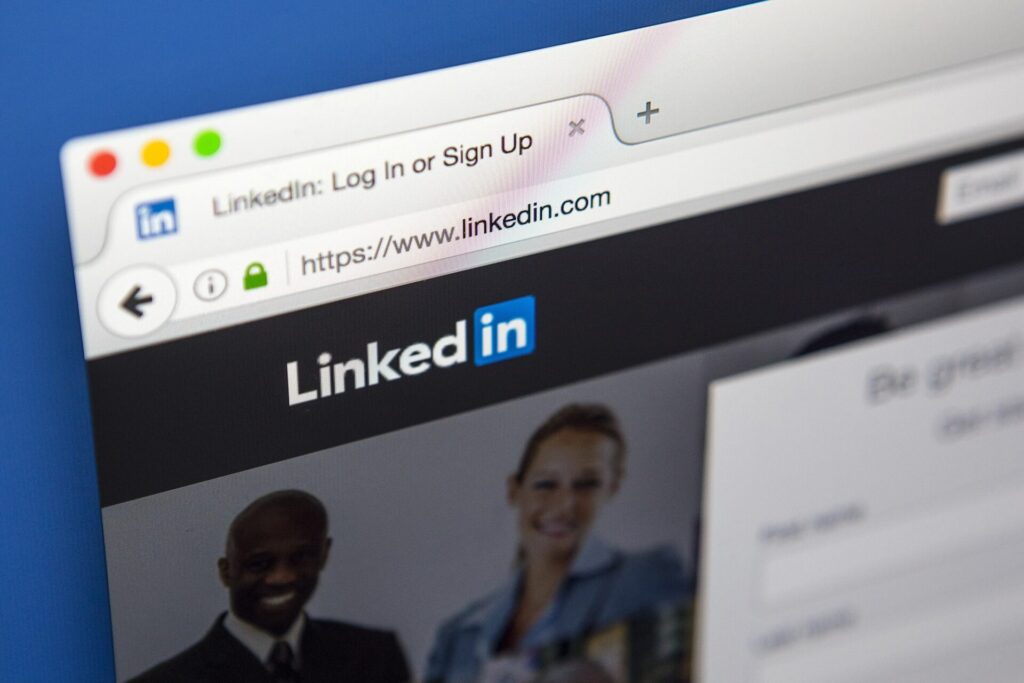LinkedIn’s Latest Algorithm Update: How It Affects B2B Content Performance

If your business relies on LinkedIn to connect with other professionals, generate leads, or share thought leadership, there’s a major shift you need to know about. LinkedIn recently updated its algorithm, and this change is already reshaping how content performs on the platform.
Whether you’re a B2B marketer or a business owner aiming to increase visibility and engagement, understanding these updates is crucial.
Below, we’ll recap what changed – and more importantly, how your business should adapt.
What’s Changed in LinkedIn’s Algorithm?
In early 2024, LinkedIn announced that it was overhauling its content ranking system to prioritize what it calls “valuable and relevant” interactions. This means surface-level engagement is no longer enough—your content must truly resonate.
Key changes include:
1. Focus on Expertise
Posts from individuals who demonstrate deep knowledge in their field are being prioritized. Content that adds insight or educates others is more likely to be featured prominently.
2. Relevance Over Virality
The new algorithm gives preference to posts that are highly relevant to a niche audience rather than content that appeals to a broad but shallow audience.
3. Dwell Time as a Ranking Signal
How long someone spends reading or interacting with a post now plays a bigger role in its visibility. It’s not just about how many people engage, but how deeply they engage.
4. Niche Engagement is More Valuable
LinkedIn favors content that sparks conversation within specific industries, job roles, or professional communities—even if total impressions are lower.
5. Comments Over Likes
Meaningful interactions, particularly comments, carry more weight than likes or other passive forms of engagement.
Why This Matters for B2B Brands
B2B brands must rethink how they approach LinkedIn content. Generic messaging, motivational quotes, and attention-grabbing tactics may no longer be effective if they lack substance or industry relevance.
This update rewards brands that publish original, educational, and thought-provoking content that serves a well-defined audience.
Here’s how these changes may affect your current strategy:
- Branded company page posts may see less reach than posts from real employees or leaders.
- Engagement metrics are shifting—posts without comments may underperform even if they receive many impressions.
- Lightweight content will likely be deprioritized in favor of posts that foster professional dialogue and offer real takeaways.
How to Adjust Your LinkedIn Strategy
These changes present an opportunity to build stronger connections and increase visibility—if you know how to respond. Here are some effective ways your business can stay ahead of the curve.
Encourage Employee Thought Leadership
LinkedIn’s new algorithm favors content from individuals, not just brands. Leverage your team’s expertise by encouraging them to share their perspectives.
- Offer templates and support to help employees create high-value posts.
- Highlight industry trends, internal wins, or client insights in their own voice.
- Encourage teams to actively engage in comment sections and conversations.
Invest in Educational and Insightful Content
Position your brand as a trusted resource. Create content that answers questions, explores complex topics, or shares actionable strategies.
- Use carousel posts or document uploads for in-depth walkthroughs or insights.
- Share case studies, original research, or how-to guides that add real value.
- Avoid generic commentary—focus on specific problems and solutions your target audience faces.
Shift Focus from Page-First to People-First
Company pages still have value, but the algorithm clearly favors real people. Build a bridge between the two.
- Feature employee-created content on your company page to amplify it.
- Cross-promote by tagging your team and encouraging employee resharing.
- Ensure company leaders are regularly posting from their own accounts with a consistent voice.
Drive Comments with Open-Ended Questions
Want to rise in the feed? Get your audience talking.
- End posts with thoughtful questions tailored to your audience’s challenges.
- Encourage teams to reply to comments and continue the conversation.
- Use community feedback to shape future content topics.
Watch Analytics Closely
Now more than ever, metrics matter. Track how these changes affect your posts and adapt your content accordingly.
- Measure comment volume, dwell time, impressions, and follower growth.
- Use LinkedIn’s analytics dashboard to identify what’s working—and what isn’t.
- Adjust your content formats, posting times, and engagement strategies based on real data.
It’s Time to Get Smarter on LinkedIn
The recent algorithm update reinforces what marketers have been saying for years: relationships and relevance matter. LinkedIn is no longer rewarding brands for simply showing up—it’s rewarding those who contribute meaningfully to the professional community.
Focus on creating high-quality, informative, and engaging content. Showcase your team’s expertise. Build connections by joining conversations that matter to your industry. That’s how your B2B brand will thrive on the new LinkedIn.
Frequently Asked Questions: LinkedIn’s Latest Algorithm Update
Q: What is the main goal of LinkedIn’s algorithm update?
A: LinkedIn aims to prioritize high-value, relevant content that sparks meaningful professional conversations. The update favors content from experts and discourages clickbait or engagement bait tactics.
Q: How does this update affect B2B brands?
A: B2B brands must shift from broad, generic messaging to more targeted, insightful content. Posts that showcase industry expertise and encourage thoughtful engagement are more likely to perform well.
Q: Are company page posts still effective?
A: Yes, but individual posts from employees and leaders often receive better visibility. Companies should amplify team-created content and encourage employee advocacy to extend their reach.
Q: What metrics should we focus on now?
A: Comments, dwell time (how long users engage with your content), and niche audience relevance are more important than likes or impressions alone. Use LinkedIn’s analytics tools to monitor these signals.
Q: How often should my business post on LinkedIn?
A: Consistency matters more than frequency. Aim for at least one high-quality post per week, but focus on value and relevance rather than volume.
Q: What types of content perform best under the new algorithm?
A: Content that educates, shares insights, tells authentic stories, or encourages professional discussion. Formats like carousels, text posts, and document uploads tend to perform well when aligned with user intent.
Pink Dog Digital Can Help Your Organization Develop a Cohesive LinkedIn Strategy
Not sure where to start with your organization’s LinkedIn or other social media strategy? We can help! At Pink Dog Digital, we create an online experience that turns users into followers and followers into customers. We can create a customized strategy to meet your needs.
Some of our services include:
- Digital Advertising
- Social Media Management
- Content Creation
- Search Engine Optimization (SEO)
- Web Design
Contact us at 410-696-3305 or email us at pi************@***il.com for any inquiries or to book a service. You can also fill out our online Contact Us form or visit our website to learn more about us.

